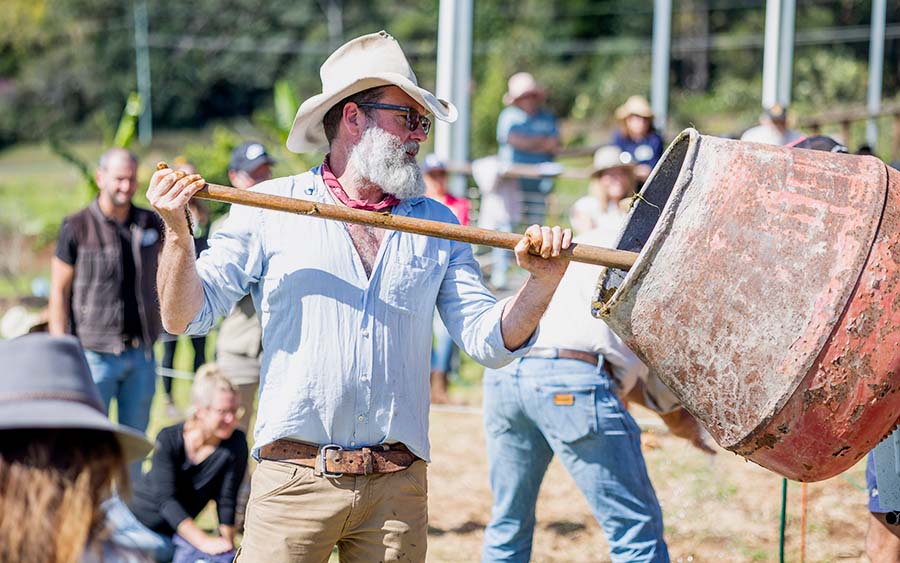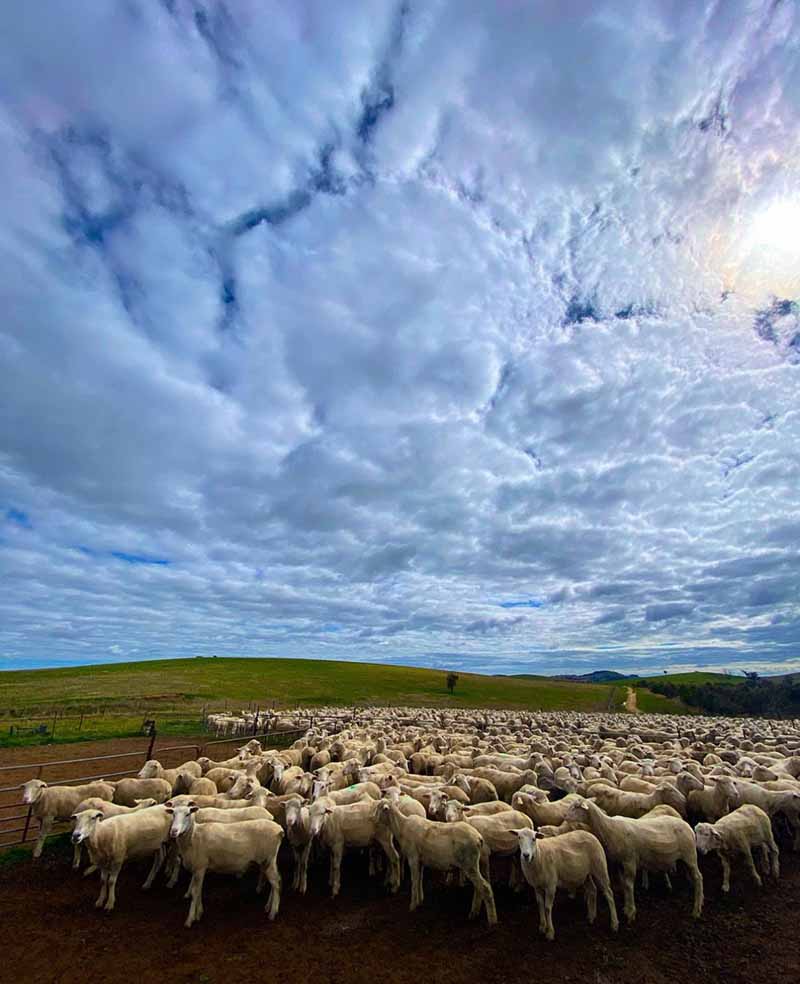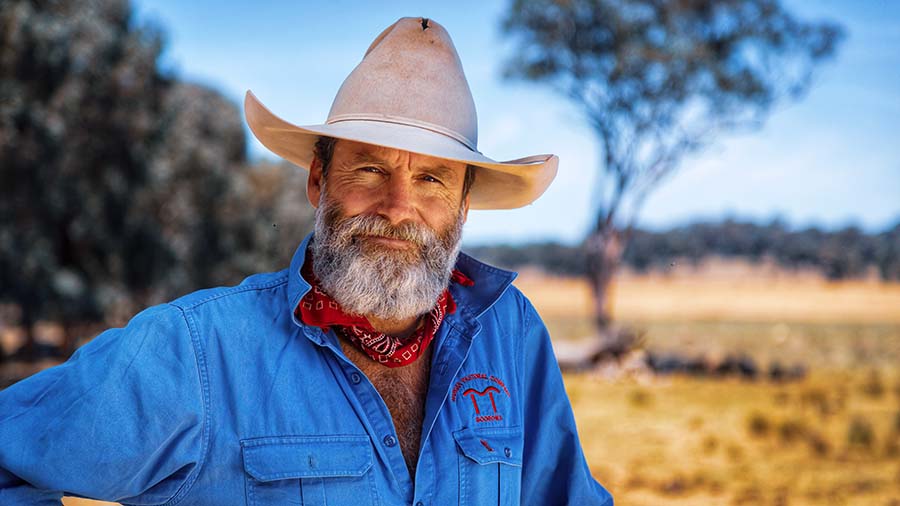Eighth-generation grazier Charlie Arnott first became aware of the importance of carbon in the 1990s while studying rural science at the University of New England. Over the years, he saw the element work its way from his textbooks into news reports about the growing 'climate emergency'. In the early 2000s, the concept of carbon farming - a way of drawing carbon dioxide from the atmosphere and sequestering it back into the soils - was floated as a remedy to climate change.
In 2007, Charlie got wind of a local Carbon Day. There was no carbon market at the time, but there was lots of talk, and Charlie, who had just started on his regenerative journey, felt he needed to be there. Expecting only a handful of farmers to show up, he recalls that 'the place was packed, and 98% of the attendees were conventional farmers.' As for what he learned: 'I couldn't tell you what they talked about, but I do remember being confused when I walked out. I think everyone was.'
'I couldn't tell you what they talked about, but I do remember being confused when I walked out. I think everyone was.'
Charlie made sure he kept his finger on the pulse from then on, but whenever he ventured back into the information days, debates and policy updates, he just became more confused. A decade later, Charlie Arnott found himself perched high on the carbon fence. And he was far from alone. Such is the uncertainty around carbon farming and the transition to net zero by 2050 that, in 2023, AgriFutures Australia initiated a fact-finding trip across the nation. The subsequent Carbon Conversation Report captured the 'confusion, annoyance and overwhelm' expressed by the 300 participants involved. Charlie's challenges echoed many of the participants' concerns outlined in the report, plus a few more besides.
An unclear path and the odd bushranger
 Charlie's carbon journey has required much soul-searching as well as education.
Charlie's carbon journey has required much soul-searching as well as education.
One of Charlie's earliest challenges was dealing with the constantly changing nature of the carbon conversation and the uncertainty around what a carbon scheme might ultimately look like. 'There didn't seem to be a clear line of sight from, "How do I get into it; what do I do; how do I make money out of it?'" reflected Charlie. 'I knew how to put carbon into the soil; however, the science, legislation and economics were very hazy.'
Not wanting to get caught up with a flawed scheme or the wrong people, Charlie stayed perched on the top rail.
Even though the carbon path remained unclear, as more organisations and people he respected became involved, Charlie could see very real opportunities emerging. However, given Australia's ongoing water buyback fiasco, he also knew 'there'd be a few bushrangers out there ready to take advantage of farmers who were a little naive or desperate to make a quid.' Not wanting to get caught up with a flawed scheme or the wrong people, Charlie stayed perched on the top rail.
Philosophical challenges
 Hanaminno is more than a property, it's a classroom, a teacher and a business partner.
Hanaminno is more than a property, it's a classroom, a teacher and a business partner.
Charlie first began implementing unconventional practices a year or two before attending his first Carbon Day in 2007. Since then, he's become one of Australia's foremost communicators and educators in the regenerative farming space. For Charlie, his family farm, Hanaminno, is more than a property; it's a classroom, a teacher and a business partner.
While sequestering carbon is a natural by-product of many of his practices, the 'commodification of carbon' left him uneasy.
Charlie's mission is simple: take care of the environment so it can grow the best food and fibre possible. But while sequestering carbon is a natural by-product of many of his practices, the 'commodification of carbon' left him uneasy. As did the idea of being bound by a contract for the next 25 years. 'It wasn't just me I'd be signing up; I'd be signing up my kids,' says Charlie.
Early adopters missing the carbon boat
As the carbon conversation continued and matured, other aspects kept Charlie from leaping. Like many pioneers of holistic practices, the Boorowa farmer was concerned that significant carbon gains had already been made on Hanaminno and that he may have 'missed the Carbon boat'. He worried that there'd be limited room for improvement compared to more conventionally run enterprises and the run-down properties venture capitalists were snapping up for their enormous carbon-building potential.
Messy conversations and political agendas
While those questions, challenges and hesitations banged around inside Charlie's head, outside, there was an even bigger, messier conversation going on. Naysayers have long accused the carbon farming community of having drunk the 'Carbon Kool-Aid' and derided project providers as merchants of smoke, mirrors and snake oil. And as for the carbon farming sector, they are only just now getting on the front foot when it comes to sharing the good news and science.
In 2023, the Australian Carbon Fund issued its first major allocation of Australian Carbon Credit Units (ACCUs). Over 250,000 ACCUs were allocated to 6 carbon projects, one of which sequestered over 126,000 tonnes within its five-year reporting period. This was a coming of age for the carbon farming sector, but negative opinion pieces in the press quickly rained upon any celebrations. For an industry already defending its integrity against a rising tide of anti-livestock and anti-farmer agendas, this was hardly the kind of media reception to instil confidence. Carbon and farming have both become political, making Charlie wonder, 'Would I be signing up the land I'm stewarding to a bigger, unseen agenda that may not have farmers' best interests in mind?'
Yet despite all the confusion and conjecture, contracts were being signed, drill rigs were fanning out across the country, core samples were being bundled off to labs and ACCU payments were starting to flow. Carbon farming was finally a reality.






